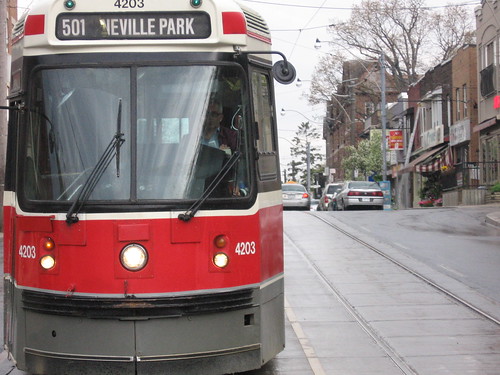If girls and young women ruptured their A.C.L.’s at just twice the rate of boys and young men, it would be notable. Three times the rate would be astounding. But some researchers believe that in sports that both sexes play, and with similar rules — soccer, basketball, volleyball — female athletes rupture their A.C.L.’s at rates as high as five times that of males.
Men also tear their A.C.L.’s, most frequently in football and from direct blows to the leg. But even football players, according to N.C.A.A. statistics, do not rupture their A.C.L.’s during their fall seasons at the rates of women in soccer, basketball and gymnastics. The N.C.A.A.’s Injury Surveillance System tracks injuries suffered by athletes at its member schools, calculating the frequency of certain injuries by the number of occurrences per 1,000 “athletic exposures” — practices and games. The rate for women’s soccer is 0.25 per 1,000, or 1 in 4,000, compared with 0.10 for male soccer players. The rate for women’s basketball is 0.24, more than three times the rate of 0.07 for the men. The A.C.L. injury rate for girls may be higher — perhaps much higher — than it is for college-age women because of a spike that seems to occur as girls hit puberty.
The Injury Surveillance reports include commentary as well as data, and in 2007 the authors stated that an A.C.L. rupture is “a rare event” and advised against making too much of the tears sustained by male and female collegiate athletes across a range of sports. But a young woman playing college soccer can easily generate 200 exposures a year between her regular season in the fall, off-season training in the spring and club play in the summer. Plenty of younger players, girls in their early through late teens, will accrue well in excess of that number between their high-school seasons, their club seasons — which often run year-round — and multigame tournaments on weekends and soccer camps in the summer. (The same is true in other sports in which girls play school and club seasons, including basketball, lacrosse, volleyball and field hockey.)
So imagine a hypothetical high-school soccer team of 20 girls, a fairly typical roster size, and multiply it by the conservative estimate of 200 exposures a season. The result is 4,000 exposures. In a cohort of 20 soccer-playing girls, the statistics predict that 1 each year will experience an A.C.L. injury and go through reconstructive surgery, rehabilitation and the loss of a season — an eternity for a high schooler. Over the course of four years, 4 out of the 20 girls on that team will rupture an A.C.L.
Each of them will likely experience “a grief reaction,” says Dr. Jo Hannafin, orthopedic director of the Women’s Sports Medicine Center at the Hospital for Special Surgery in New York. “They’ve lost their sport and they’ve lost the kinship of their friends, which is almost as bad as not being able to play.”
Silvers, along with a Santa Monica orthopedic surgeon, Bert Mandelbaum, designed an A.C.L.-injury-prevention program that has been instituted and studied in the vast Coast Soccer League, a youth program in Southern California. Teams in a control group did their usual warm-ups before practices and games, usually light running and some stretching, if that. The others were enrolled in the foundation’s “PEP program,” a customized warm-up of stretching, strengthening and balancing exercises. An entire team can complete its 19 exercises — including side-to-side shuttle runs, backward runs and walking lunges — in 20 minutes. One goal is to strengthen abdominal muscles, which help set the whole body in protective athletic positions, and to improve balance through a series of plyometric exercises — forward, backward and lateral hops over a cone. Girls are instructed to “land softly,” or “like a spring.”
There is nothing complicated about the program. And nothing really exciting about it either — which, as with many preventive routines, is one of its challenges. As essential as it may be, it’s not as interesting as kicking a soccer ball around.
The Santa Monica Orthopaedic and Sports Medicine Research Foundation published results of its trial in the American Journal of Sports Medicine. The research was nonrandomized and therefore not the highest order of scientific research. (The coaches of teams doing the exercises made a choice to participate; the control group consisted of those who declined.) Nevertheless, the results were attention-grabbing.
The subjects were all between 14 and 18. In the 2000 soccer season, researchers calculated 37,476 athletic exposures for the PEP-trained players and 68,580 for the control group. Two girls in the trained group suffered A.C.L. ruptures that season, a rate of 0.05 per 1,000 exposures. Thirty-two girls in the control group suffered the injury — a rate of 0.47. (That was almost twice the rate for women playing N.C.A.A. soccer.) The foundation compiled numbers in the same league the following season and came up with similar results — a 74 percent reduction in A.C.L. tears among girls doing the PEP exercises.
The program has direct parallels with the research taking place at the military academies. Both are focused on biomechanics — the way athletes move — in no small part because gait patterns can be modified, unlike anatomical characteristics like wider hips. Marshall has been encouraged by information taken from the sensors attached to his subjects as they jump. “Women tend to be more erect and upright when they land, and they land harder,” he said. “They bend less through the knees and hips and the rest of their bodies, and they don’t absorb the impact of the landing in the same way that males do. I don’t want to sound horrible about it, but we can make a woman athlete run and jump more like a man.”
Silvers stressed the importance of training girls as young as possible, by their early teens or even younger. “Once something is learned neurally, it is never unlearned,” she said. “It never leaves you. That’s mostly good. It’s why motor skills are retained even after serious injuries. But ways of moving are also ingrained, which makes retraining more difficult with the older athletes. The younger girls are more like blank slates. They’re easier to work with.”
The PEP program, and others like it around the country, are not without their skeptics, who ask how you can try to solve a problem before you are even confident of its cause. Donald Shelbourne, an Indianapolis orthopedic surgeon and researcher, is perhaps the most vehement of the critics. “It’s like me taking antioxidants,” he says. “I don’t have cancer yet, so it’s working, right? These retraining programs play on emotions without data. They’re unproven. Jumping and landing is something that everyone knows how to do, and now we’ve got people saying, ‘We can teach you to do it better.’ I don’t buy it.”
Coaches rarely like to give up precious practice time for injury prevention, and often have to be pushed by parents.
The club structure is the driving force behind the trend toward early specialization in one sport — and, by extension, a primary cause of injuries. To play multiple sports is, in the best sense, childlike. It’s fun. You move on from one good thing to the next. But to specialize conveys a seriousness of purpose. It seems to be leading somewhere — even if, in fact, the real destination is burnout or injury.
There is a fascinating parallel in research on injury rates in U.S. Army basic training, a two-month regimen that pushes recruits to their physical limits. In numerous studies going back more than two decades, women are shown to suffer injuries at substantially higher rates than men, with stress fractures to the lower legs a particular problem. But one large study also suggests that the women are both more frequently injured and tougher. It takes a bigger injury to knock them out of the service. The men, by comparison, are wimps; they leave with more minor ailments.
In sports, just as in the military, women are relative newcomers. In both venues, there may be an element of “toughing it out” to prove they belong. “From the earliest levels in girls’ sports, up through the elite and Olympic level, how one plays the sport, how one comports oneself, is talked about in specific ways that transcend technical or tactical expertise,” Colleen Hacker says. “It is more overt with the girls than the boys. Character counts. Physical toughness, mental toughness and handling adversity count.”
























 As enrollment grew and college finances stabilized, Trinity added a new convocation hall (c. 1877), and college chapel (1884), as well as an expansion on the new west wing (1889-90), and a new east wing (1894). The newer buildings were simpler and more restrained designs by Frank Darling, the college's official architect. Darling's stone gates, built in 1904-5 to mark the broad approach from Queen Street, are one of the only visible reminders that the college was ever here. St. Hilda's College, the women's residence at Trinity, is the other, and has since been turned into John Gibson House, a retirement residence.
As enrollment grew and college finances stabilized, Trinity added a new convocation hall (c. 1877), and college chapel (1884), as well as an expansion on the new west wing (1889-90), and a new east wing (1894). The newer buildings were simpler and more restrained designs by Frank Darling, the college's official architect. Darling's stone gates, built in 1904-5 to mark the broad approach from Queen Street, are one of the only visible reminders that the college was ever here. St. Hilda's College, the women's residence at Trinity, is the other, and has since been turned into John Gibson House, a retirement residence. 
